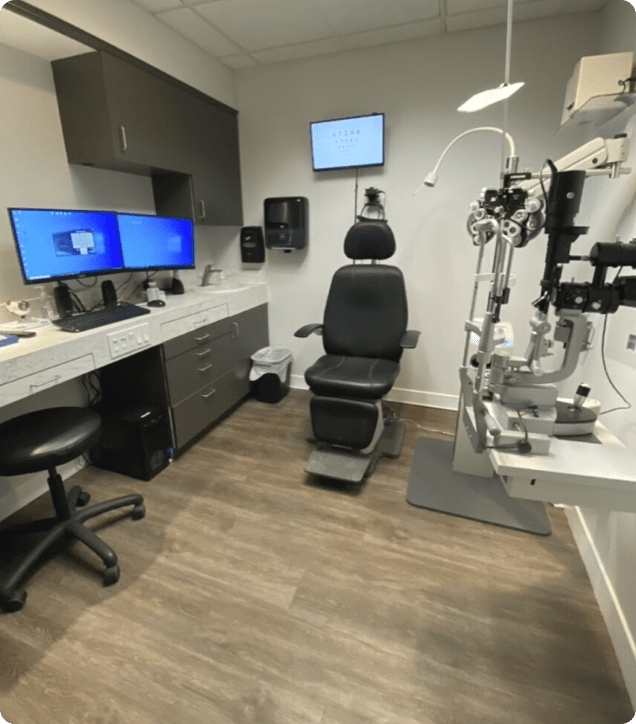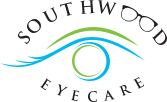Don’t Lose Your Vision to Glaucoma
Glaucoma is a leading cause of blindness in Canada. It has cost nearly 300,000 Canadians their vision—and many people don’t even know they have it until some of their sight is already gone for good. That’s because glaucoma often does not show symptoms before vision loss begins.
Fortunately, your eye doctor can help slow glaucoma down and preserve your functional vision if they catch it soon enough. Maintaining a regular eye exam schedule lets your eye doctor keep tabs on your risk for this disease and take steps to address it quickly if it appears.
Different Types of Glaucoma Explained
Glaucoma is related to optic nerve damage. Damage to the optic nerve often results from pressure building up within the eye, but sometimes other factors can cause glaucoma as well.
Numerous forms of glaucoma exist, including:
Open-angle glaucoma
This type occurs when the drainage angle between the iris and the cornea is normal but slowly becomes clogged over time. When this happens, fluid can eventually collect in the eye and put too much pressure on the optic nerve.
Open-angle glaucoma often develops over the course of years and shows no symptoms until permanent vision loss has already started. Regular eye exams are vital for catching it early so that action can be taken to preserve your vision.
Angle-closure glaucoma
This type occurs when the angle between the iris and the cornea becomes too narrow, causing fluid to build up in the eye rapidly. Unlike open-angle glaucoma, angle-closure glaucoma is often painful and requires emergency medical intervention.
In addition to eye pain, angle-closure glaucoma may also have other noticeable symptoms, including:
- Nausea
- Red eyes
- Blurry vision
- Seeing halos around light sources
Normal-tension glaucoma
This type of glaucoma occurs when the pressure inside the eye remains normal, but the optic nerve becomes damaged by something else.
Congenital glaucoma
This type of glaucoma develops in infants whose drainage canals have not formed properly during their prenatal periods. It is fairly rare and can sometimes be treated with surgery or medicine.
How Eye Doctors Can Help with Glaucoma
All types of glaucoma can lead to blindness without your eye doctor’s help. At our practice, we may recommend medication intended to lower the pressure in your eye.
Certain types of surgeries may also be appropriate for patients with glaucoma. However, these surgeries cannot restore vision lost to glaucoma—they can only reduce intraocular pressure when medication is not sufficient to do so.


Glaucoma Risk Factors
The following people face higher risks for glaucoma than others:
- People older than 60
- People with a family history of glaucoma
- People with diabetes, heart disease, and certain other medical conditions
- People who have suffered from severe eye trauma
- People who use corticosteroids
- People who have experienced retinal detachment, eye tumours, and eye inflammation
Some research suggests that certain corneal thicknesses and optic nerve characteristics may also be linked to higher glaucoma risks, along with severe myopia.
Get Help with Glaucoma Today
Living with glaucoma does not always have to cost you your vision. Let our eye doctors help you manage glaucoma and preserve your functional vision by contacting our practice today.

Come See Us
We have plenty of convenient parking in the Southwood Corner shopping centre at the junction of Southland Drive & Elbow Drive.

Our Address
- 160-10233 Elbow Drive SW
- Calgary, Alberta T2W 1E8
Contact Us
- Phone: 587-355-7194
- Email: [email protected]
Hours of Operation
- Monday: Closed
- Tuesday: 9:00 AM – 5:30 PM
- Wednesday: 9:00 AM – 5:30 PM
- Thursday: 9:00 AM – 6:30 PM
- Friday: 9:00 AM – 5:30 PM
- Saturday: 10:00 AM – 3:00 PM
- Sunday: Closed

Our Services

Our Brands












